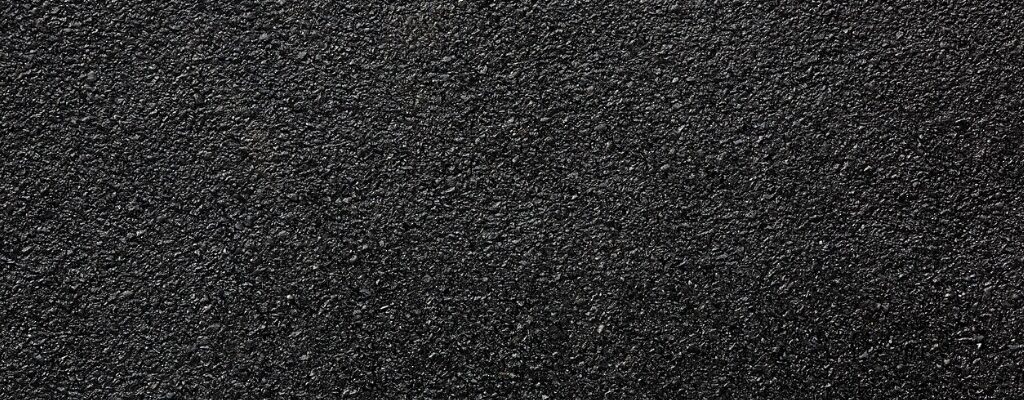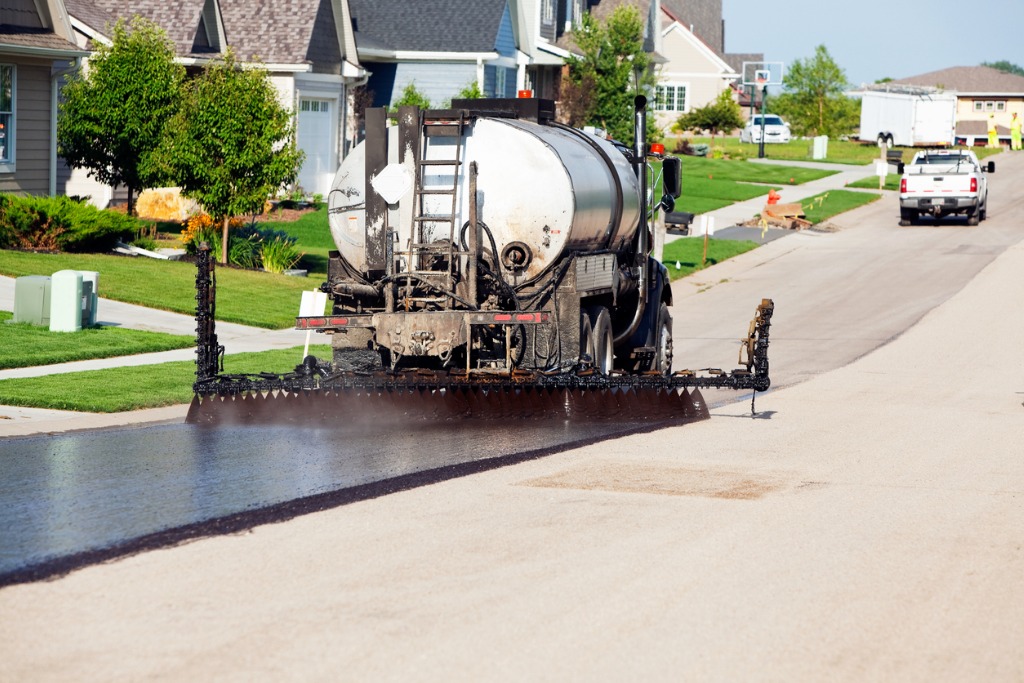Let’s talk about asphalt pavement and applying sealcoating product. They are related but different, and both are essential elements of properly maintained, long-lasting surfaces. Asphalt is composed of rock and/or stone, gravel, and a binder. The binder is created from the distillation of petroleum or natural deposits, and it consists of compounds of hydrogen and carbon, along with smaller amounts of nitrogen, sulfur, and oxygen.
Keeping the binder strong and maintaining its integrity is vital to prolonging the life of the asphalt because U.V. rays, chemicals, and rain will degrade the binder. Sealcoating reduces the effects of the degrading process and thus extends the life of an asphalt paved surface.
Asphalt paving is the process of applying asphalt mixtures to roadways, parking lots, walkways, walking trails, patios, driveways, and sports construction projects. Asphalt paving can include laying down new surfaces, filling potholes, repairing major cracks, and correcting imperfections in existing pavement areas. In each case, the paving process will protect and preserve the surface as well as improve the aesthetic appeal of the surrounding area.
 What Is Sealcoating?
What Is Sealcoating?
The substance used in sealcoating is made of bituminous or acrylic-based liquids mixed with water silica sand, polymer additives, and other fillers and solids.
Sealcoating is the application of this viscous liquid on top of asphalt paving. It is designed to fill in cracks and chips and protect a surface against harsh weather, chemicals, water, oils, vehicular harm, and U.V. damage. It is simply a protective barrier. A regularly scheduled program of sealcoating can significantly extend the life of a paved surface.
When Do You Need Asphalt Paving or Sealcoating?
If a paved surface develops ruts, is severely broken, or has major cracking that can’t be repaired, it is time to resurface it. If the paved area is beginning to turn grey (asphalt is very black when it is first laid) and appears to be dried out, if there are small cracks, chips, and decay evident, then it is time to sealcoat the surface.
Most asphalt experts recommend sealing paved areas about every two to three years. If an asphalt surface is new, it should be sealcoated the next year after the oils have cured to protect it from drying out.
What Are the Benefits of Sealcoating?
Sealcoating offers these benefits:
- It provides a beautiful finish to the asphalt paving so that the finished area looks appealing.
- Slows down the oxidation of the bitumen in the asphalt mixture, which leaves the pavement brittle and more susceptible to cracks and other damage and turns the pavement from an attractive black to a less-attractive grey color.
- Protects against water damage. An unsealed surface will allow water to penetrate the asphalt’s pores. Sealing prevents water from entering cracks in the pavement, causing degradation from below, especially in winter months when water can freeze and expand in the cracks, causing more damage.
- Protects from sun damage. The sun’s U.V. rays cause the paved surface to oxidize and break down the binding properties of the asphalt, so it becomes brittle and susceptible to damage.
- Protects a paved surface from the damage caused by oil and fuel spills and from chemical substances that will soften and weaken the surface. The substances in sealcoating provide a barrier against oil, fuel, and chemical substances so that they don’t penetrate and degrade the asphalt.
- It prevents the asphalt from cracking under pressure caused by vehicular traffic. When asphalt is in good condition, it will be flexible to pressure, but when degraded, it becomes brittle and more subject to damage.
- It saves money in the long run because good maintenance and regular sealcoating will keep the surface in good condition and prevent the need for a full pavement replacement.
What Is the Sealcoating Process?
First, the conditions must be right for sealcoating to be successful. The temperature must be at least 50 degrees for not less than 24 hours during and after application. Sealcoating can’t be applied if rain is imminent in the next 24 hours. All vehicles must be removed from the area to be sealcoated, and no vehicular traffic should be allowed for 24 hours after application. Make sure to turn off all sprinklers, so the sealed area doesn’t get wet.
The area to be worked on should be closed off to pedestrians and vehicular traffic with cones, barricades, and possibly caution tape to provide safety to people in the area.
Second, the edges of the area to be sealcoated should be carefully cleaned and trimmed back so that the coating can be applied to the very edge of the pavement. Thus, the area will have a crisp and finished look.
Third, the area to be sealcoated should be cleaned because the sealcoating will not adhere to dirt or mud. Professional pavement contractors will use robust cleaning equipment, including blowers, rotary brooms, and sweepers.
Fourth, linear cracks will be blown out using compressed air blowers. Then those cracks will be filled with a hot rubberized crack filling compound that will expand and contract with the pavement during any expansion and contraction cycles.
Fifth, oil and grease spots (if present) will be treated with a primer compound to allow the sealcoat to properly adhere to the asphalt.
Sixth, generally, two applications of sealcoat will be applied to the paved surface using the latest state-of-the-art equipment. For large areas, that will typically be via a squeegee machine or spray application. For smaller areas, the process may include the application of the sealer from buckets and using a squeegee or thick nap roller. The trim areas are typically sealed by hand to avoid the possibility of overspray on curbs, concrete walkways, or buildings.
After allowing the sealcoating time to properly cure, the normal use of the area can resume. All-in-all, this process should only take about 24 hours!
What Can McConnell & Associates Do for You?
Since 1965, McConnell & Associates has been restoring, protecting, restoring, and beautifying surfaces throughout the Midwest. With industry-leading services, including restoring and repairing concrete sidewalks, curbs, and gutters, resurfacing tennis courts, installing new running tracks, and protecting paved surfaces with sealcoating.
We are professionally experienced and qualified to care for your exterior pavement and asphalt needs. Our comprehensive services include asphalt repair and maintenance, design build, new installation, and sealcoating.
Contact McConnell & Associates with offices in Kansas City, Wichita, St. Louis, and Pevely. McConnell leads the industry with premium pavement, concrete, and sport surface products and services. Wherever you walk, park, or play, we are your one source for service with the experience you need to make your project a success.


 What Is
What Is .png)


